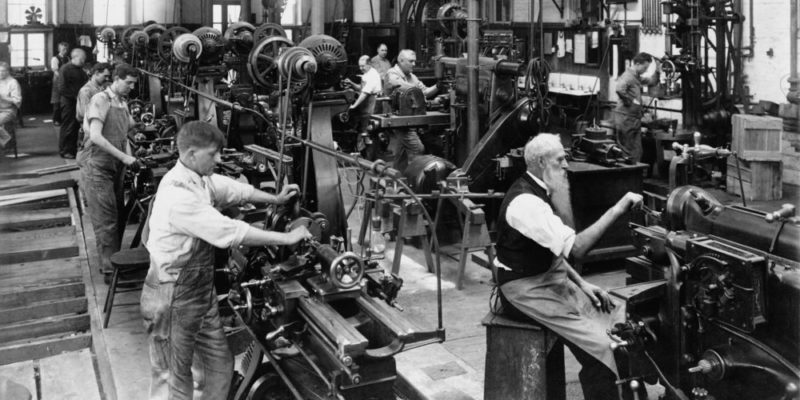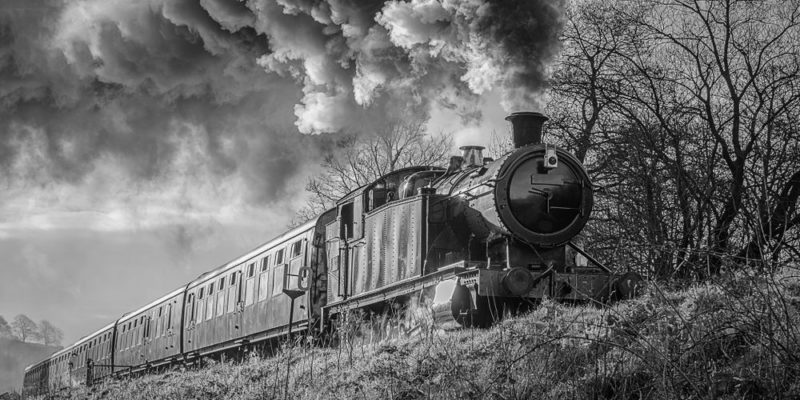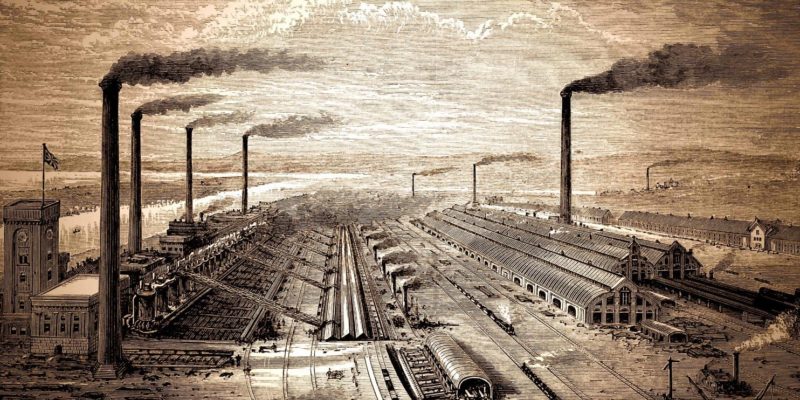We explain what the Industrial Revolution is and what its characteristics are. Also, the causes and consequences of this period.
What is the Industrial Revolution?
The Industrial Revolution is a historical period of economic and social transformation, between 1760 and 1840, which unleashed unprecedented changes for societies around the world.
It was characterized by the use of new technologies applied to mass production (also called serial production). The first invention that allowed this new form of production was the steam engine, whose fuel was coal.
The beginning of the Industrial Revolution was in England since that country presented the economic, political, social, and technological conditions necessary for that great change. By the 19th century, the Industrial Revolution was already part of the societies of Europe, the United States, and Japan.
Characteristics of the Industrial Revolution
Among the main characteristics of the Industrial Revolution, the following stand out:
- Large-scale industrial production, especially of food.
- The dominance of the bourgeoisie over the economy and politics, replacing the absolute power of the nobility and gave rise to the social class of the proletariat.
- The development of new industries such as textiles, iron, and steel ( metals ) or mining.
- Substituting the iron for steel a materials are harder and more durable.
- The development of world trade (due to large production capacity and innovations in land and sea transport).
Causes of the Industrial Revolution
 The Industrial Revolution was produced by the interaction of a series of factors that first took place in England and then throughout the world:
The Industrial Revolution was produced by the interaction of a series of factors that first took place in England and then throughout the world:
- The agricultural revolution. Until the 18th century, agricultural activity was very similar to the practices of the Middle Ages. Manual labor and animal traction were common, little private property (the fields were rather open or owned by the municipality), and scarce production due to the "fallow" system (it consisted of letting the land rest between each harvest so that soil nutrients are regenerated ).
The Industrial Revolution introduced changes: machinery began to be used for work of the land, the fields became private property and the old farming system was replaced by the “Norfolk rotation system” (it consisted of rotating the varieties of crops so that the same nutrients in the soil were not always saturated).
- The demographic revolution. Due to the changes in food and in the quality of life (which went from the countryside to the city ), from the 18th century on, the traditional social structure that used to maintain the same number of settlers for long periods of time was broken. The Industrial Revolution introduced changes that had an impact on population growth, such as a decrease in mortality (due to increased food production), the greater development of medicine (thanks to the discovery of the vaccine), and the consequent increase in the birth rate.
- Bourgeois revolutions. From the middle of the 18th century, the bourgeoisie began to demand the dominion of the political and economic power that until then was in the hands of a king and the nobility, which gave rise to the French Revolution and the Thirteen Colonies (North American), among other.
The Industrial Revolution would not have been such without the empowerment of the bourgeois sector, which introduced great changes: the creation of enterprises and the circulation of capital, the development of the industry through private property, technological advances, trade, and the capitalist economy. In addition, the bourgeoisie encouraged the creation of significant inventions. At the same time, a new social class emerged: the proletariat, the working class that lacked property or means of production.
First industries of the Industrial Revolution
 The interaction of the various factors managed to strengthen the development of three key industries for the expansion of the Industrial Revolution:
The interaction of the various factors managed to strengthen the development of three key industries for the expansion of the Industrial Revolution:
- The mining industry: Starting in the 19th century, the charcoal that came from wood was replaced by coking or mineral charcoal. At the same time, a perverse side developed: the exploitation and slavery of man to work in the mining fields. Due to the narrowness of the roads into the mines, child exploitation arose in the mining sector.
- The steel industry: Iron and steel were the main raw materials of the time, which were used for the production of agricultural tools, textile machines, locomotives, railway rails, and ships. It was possible to work iron through the use of industrial furnaces that operated at very high temperatures thanks to the fuel of mineral coal.
- The transportation industry: Until the 18th century, the transport system was based on means of animal traction, wind, rowing, among others. In the 19th century, there was a shift from horse-drawn transportation to the railroad, thanks to the emergence of the steam engine and the development of the steel industry that made it possible to make locomotives and rails. The railroad revolutionized commerce and the movement of people.
- Business expansion. From the bourgeois impulse, an unprecedented commercial growth was generated that impacted the whole world. Due to the creation of important inventions, such as the railroad and the steamship, world trade developed to transport new raw materials or sell products in distant countries.
Key inventions of the Industrial Revolution

The technologies applied to production marked a radical change for industries, due to the fact that manual work was replaced by mass production. They are key inventions that unleash the revolution were:
- The steam machine. Patented in 1769 by James Watt (Scotland), it was the most important invention of the Industrial Revolution. The first uses were in transportation (it allowed to promote trade), the textile industry (it allowed serial production through machinery), and the metallurgical industry (it allowed to work iron and steel to make transport and industrial machinery).
- Gas public lighting. The installation of gas lamps in the streets revolutionized the cities, which became safer places to travel by being illuminated at times when there was no longer sunlight. By the end of the Industrial Revolution period, cities had been transformed and populations had doubled or tripled.
Consequences of the Industrial Revolution
 The large urban conglomerates multiplied the concentration of pollutants typical of cities: organic waste and atmospheric pollutants from stoves.
The large urban conglomerates multiplied the concentration of pollutants typical of cities: organic waste and atmospheric pollutants from stoves.Furthermore, both in the first and second stages of the Industrial Revolution, factory production depended largely on the use of fuels, with the consequent air pollution. On the other hand, the excessive production of merchandise began to have the effect of more rapid production of waste.
Before the organization of the workers' sectors, there were no laws regulating the work of the proletariat. Since there was a large sector of the population without economic resources, many people accepted jobs in any condition. For this reason, the working hours were so long that they became unhealthy, in addition to the fact that child labor was allowed.
Labor legislation and workers' organizations, as well as the new ideologies ( socialism, communism ), were the forces that drove changes in these conditions. However, in some countries, the levels of exploitation observed in the 18th century are still in force.
The above content published at Collaborative Research Group is for informational and educational purposes only and has been developed by referring to reliable sources and recommendations from technology experts. We do not have any contact with official entities nor do we intend to replace the information that they emit.
MA student of the TransAtlantic Masters program at UNC-Chapel Hill. Political Science with a focus on European Studies. Expressed ideas are open to revision. He not only covers Technical articles but also has skills in the fields of SEO, graphics, web development and coding. .
Leave a reply
Your email address will not be published. Required fields are marked *Recent post

Sport: What Is It, Types, Risks, Features, Characteristics and Examples

Dogs: Emergence, Features, Characteristics, Feeding and Breeds

Story: Definition, Elements, Structure, Features and Characteristics

